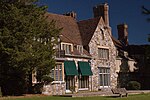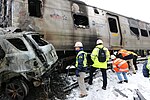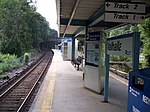John Hartford House
Houses completed in 1930Houses in Westchester County, New YorkHouses on the National Register of Historic Places in New York (state)National Historic Landmarks in New York (state)National Register of Historic Places in Westchester County, New York

The John A. Hartford House, now known as Hartford Hall, is a historic house on the campus of Westchester Community College. It was built in 1930–32 by John A. Hartford (1872–1951), company president of the Great Atlantic and Pacific Tea Company (A&P). The house was designated a National Historic Landmark in 1977 for its association with Hartford, who oversaw the rise of A&P into the nation's first national chain grocer. The building now houses the office of the college president, among other uses.
Excerpt from the Wikipedia article John Hartford House (License: CC BY-SA 3.0, Authors, Images).John Hartford House
Grasslands Road, Town of Greenburgh
Geographical coordinates (GPS) Address Nearby Places Show on map
Geographical coordinates (GPS)
| Latitude | Longitude |
|---|---|
| N 41.068888888889 ° | E -73.790277777778 ° |
Address
Westchester Community College
Grasslands Road 75
10603 Town of Greenburgh
New York, United States
Open on Google Maps







